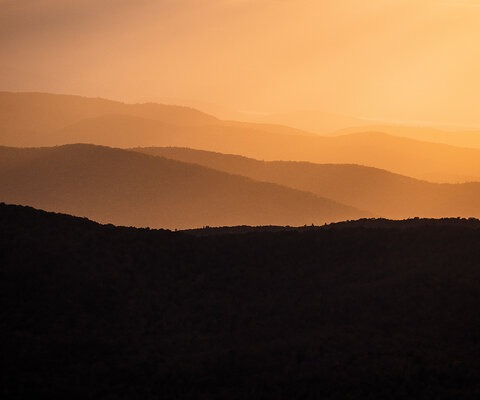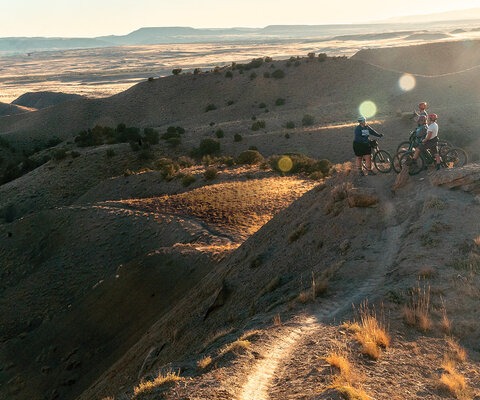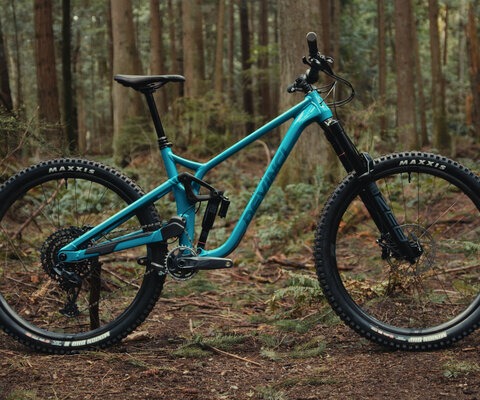Agricultural Education - Brett Rheeder Goes from Rural Ontario to Slopestyle Supremacy
“I said I’d never build here again,” Brett Rheeder says. He’s standing behind his parents’ house in Mount Albert, Ontario, which is about 40 miles north of Canada’s largest city, Toronto.
It’s a classic rural setting with approximately 2,700 folks spread out across a patchwork of cornfields. He’s got a pile of 16-foot-long 2x6 lumber hanging out the tailgate of his late-model Toyota Tacoma, nearly bottoming out the rear suspension. Today, he’s building a backyard structure for the first time in four years with his brother Christopher, childhood riding buddy Matt Pollington, and the Freehub crew.
The 22-year-old Rheeder grew up on an 88-acre farm just down the road, exploring the area with his two brothers on mountain bikes in the summer, then occupying his time with snowmobiles, snowboards and toboggans in the winter. They also learned how to work with their hands through their dad, who owns and operates a demolition business.
“Our old place was on the highest area in this part of Ontario,” Rheeder says. “We had my dad’s machines and a huge barn full of lumber that he stocked from his jobs. I learned how to build from him. We started hitting a little bump on our driveway, just tilting a piece of wood up as high as we could, and it progressed into building ramps. After watching my dad build a bunch of them, I figured it out. Then, when we moved to this house six years ago, we had a blank canvas in the back. It was a challenging canvas because it’s flat here and there’s a really high water table, so we have to build everything above the ground. Now I know what I want after riding the contests and I can setup whatever I want out here.”
Rheeder came of age in the Internet era, looking to Pinkbike videos for inspiration. He raced cross-country as a youth, but cites the edits being created by Brandon Semenuk and Cam McCaul 2,000 miles to the west as early inspiration. “We were just doing our own thing until we discovered what those guys were up to,” Rheeder says. “It was this relatable content that we could watch and grow off. I remember watching Cam McCaul doing front flips and we didn’t even know how to backflip yet. So we built a foam pit, learned how to backflip, and went from there. I hate to say it, because I think the Internet can be a horrible waste of time, but it showed us what was possible. There was no one really leading the charge out here.”
By age 16, Rheeder was ready to start doing slopestyle events. With his mom as travel planner, he flew to Winter Park for Crankworx Colorado (now the Colorado Freeride Festival). “The jumps were pretty big there—I had never hit anything that big before,” Rheeder says. “I showed up with just a back brake on my bike. You really needed a front brake as well. The first drop had this crazy rock roll into a corkscrew before a 15-foot air. At that point in my life I didn’t even know what that was—I didn’t know how to hit it, or slow down, or anything. I started practicing on the lower half of the course and overrotated a flip and got a concussion. I went to the clinic, they said I had altitude sickness and gave me an oxygen tank. I was walking around the contest with an oxygen tank watching those guys I looked up to riding, and realized how much I had to learn.”
Rheeder went home with a new appreciation for the bike-handling skills he would need to compete at the next level. Joyride 150, an indoor bike park a half hour south in the Toronto suburb of Markham, had just opened its doors, and he finally had somewhere to ride year round. He started building bigger features in the yard and chased the slopestyle circuit around North America in 2010. “I didn’t make any finals in 2010,” Rheeder says, “but in 2011 I started making finals. At the end of 2011, I won my first contest, which was the AT Showdown in San Francisco. And then in 2012 I ended up getting on Trek. That gave me a new level of motivation. I could work with them to get my bikes dialed in, and that was the year that I really started doing well—2013 was the first year that I started winning.”
By then, he was riding with his childhood heroes on a regular basis. “In 2012, I was hanging out at Cam McCaul’s house in California,” Rheeder says. “I had never ridden [Red Bull] Rampage before, and I said to him, ‘I don’t think I ever want to compete in Rampage.’ Later on that year, I found myself on a plane going out to Virgin, Utah. I’d never had a downhill bike until that year. It was a bit of a struggle getting used to it, but I’ve put in my work. You can ride down some pretty burly stuff on a downhill bike, but it took a bit just to understand that in my head. Rampage is so exposed and vertical and steep.”
Going from groomed slopestyle courses to Rampage was about as abrupt an introduction to freeriding as one can have, but Rheeder handled it and stuck a clean run, finishing in 17th. It helped with his confidence and the head games that come with competing at a higher level. His 2013 campaign opened with a string of podiums, including a win at the first-ever X Games mountain bike slopestyle contest in Munich. The course was huge. “No one wanted to ride because it was so windy that day,” Rheeder says, “but I just saw it like you couldn’t not ride. Our sport’s finally in X Games—we need to ride! Riding in the wind is dangerous, but what we do is dangerous. That’s why we’re good at what we do, because we can ride our bikes in dangerous conditions and situations. So making that happen and beating Brandon for the first time, with both of us riding at our best, that’s still the standout result in my career. Lots of people think that this Crankworx that I just won [Rotorua 2015] was a huge result, but X Games Munich felt so good to me on a personal level. Beating the person I looked up to growing up on the biggest stage we’ve ever had was pretty special.”
Not only did he beat Semenuk, but he beat him on the final run of the event, right after Semenuk threw down an impressive line to take the lead. Re-watching Rheeder’s interview at the bottom, he doesn’t have the confident ease of someone like, say, Cam McCaul, or the calculated intensity of Semenuk—rather, he searches for words, stammers a little and smiles in disbelief. There’s that humble farm boy, again, standing atop the slopestyle world.
At the next event in Les 2 Alpes, France, Rheeder packed it into the backside of a landing and compressed three vertebrae. The fractures were pretty minor, but it was still a serious injury. It put him on the sidelines for the remainder of the year. Coming back was a mind game more than anything. “It was super nerve-wracking at first,” Rheeder says. “The first couple of contests back, I felt like I’d never ridden a contest before. Dropping in, I had so many nerves. Obviously I didn’t want to do the same thing twice. But I think it was a healthy bit of nerves. I came back with a goal of trying to avoid injury at all costs. Having Joy Ride 150 to practice tricks on a smaller scale has been key for the past few years. It allows you to do your homework and learn how to fall along the way, and really consider the odds of getting hurt or crashing before I do a trick or hit a jump. I’ve learned it’s good to think about everything that could happen just before you do something.”
Clearly, Rheeder takes a calculated approach. His career has been based on a series of incremental steps, from those backyard launch ramps to machine-built behemoths.
It’s allowed him to build up to the big stuff, like the over-vert flip he guinea pigged and landed in early 2013, which blew up the mountain bike bandwidth when it dropped in Anthill’s Not Bad. He puts in long hours so progression can come from a comfortable headspace.
“I’ve done my homework,” Rheeder says. “My winning run in New Zealand was made up of tricks I knew how to do. But I need to start working on the tricks that I’m not sure about yet. I feel like my progression has been at the same spot for a little while. That’s why I’m building my backyard setup, so that I can continue to build my tricks and work on my type of riding for these contests coming up. The sport’s progressing so fast, and it’s hard to stay near the top. It takes a lot of money, it takes a lot of effort, it takes a lot of sweat and tears to do that. So that’s why I’m here in Ontario building up the yard again.”
Rheeder never planned to build another structure in his parents’ backyard. For the past couple of years, he’s been seeking a property out west, in order to be closer to the heart of freeride mountain biking. He’s always flying west to film and compete. It’d make sense for him to live there. But he’s been having a hard time finding the perfect spot, especially when he’s got such a good setup back home. Indeed, his dad has set aside a quarter of his massive garage for Brett. He keeps his collection of custom slope bikes there and can run through the significance of each frame hanging on the wall with pride. He’s got his dad’s machines and plenty of room to build.
“Ontario isn’t the greatest place to be a mountain bike rider,” Rheeder says. “I have spent the last two years looking for houses out west, but I haven’t found the one. I wouldn’t be able to settle on a town house, or something with no property, so trying to find the right house, on the right property, in the right location has been quite the struggle. Like, do you want to be in interior BC, on the coast, or on [Vancouver] Island? Or maybe Whistler? Between contests and video shoots, it’s hard to get on the Internet and figure out exactly where, let alone find the right place. I do plan on relocating at some point. I drove out west [this spring] hoping that I wouldn’t have to drive back, but it just didn’t happen. So maybe this fall, maybe next year I’ll move. BC is the place where all the riding happens—it’s just so good for biking. I’ve spent lots of time trying to figure out exactly where I want to be—that’s not in Ontario.”
If Rheeder sounds hesitant to leave home, well, maybe he is. Maybe he’s still a small-town Ontario kid at heart.
Maybe committing full time to the west coast is intimidating. For now, Ontario seems to be serving him well, but the constant traveling is getting tiring. Still, after two days’ labor, he and the assembled crew have put up a formidable structure: a 20-foot drop upon which to practice, to learn new tricks to bring back west, over to Europe, and onto web feeds the world over.
He stands atop the ramp and drops in. His first hit is a bar spin. Then he backflips and lands smooth. Then he does it again. Repetition breeds comfort, and Rheeder is doing his homework. He stops and takes a moment to reflect.
“At the top level, you’re basically just recycling the most insane tricks ever, and doing them over and over,” he says. “Sometimes you don’t want to—sometimes it’s hard to stay fearless. You basically need to be fearless to keep progressing, and it takes lots of effort and motivation. But I’m going to do it for as long as I can, because it’s such a personal challenge.
“Being a mountain biker is pretty interesting—you literally never know what you could be doing next. I mean, I kind of planned to build something here, but, holy cow, we just erected a huge structure in two days. I could get a call from Monster or Fox any day and they’ll say, ‘Hey, we need you out in California for a jump day, or a contest or a shoot. And it’s like, ‘OK, well you’re the ones that are allowing me to do what I love to do, so that’s where I’m going.’ I’ve always wanted to jump and do tricks on a bike, so I’m glad that it’s taken me as far as it has—I’m really lucky that I’ve been able to do this for so long already. So yeah, life’s pretty good, I guess.”
Indeed, Ontario’s been good to Rheeder. He’s comfortable at home. “There’s no mountains here and it gets really humid in the summertime, but the fall’s really amazing,” he says. “It cools down, the leaves get really vibrant, lake country is just up north—it’s one of my favorite places to be.”
For now, he’ll stay in the backyard and carry on his mountain bike homeschooling, repeating tricks until they’re ingrained in his body and mind—until he’s ready to get on that next flight and show the world what he’s learned on this prairie-bound Ontario farm.





